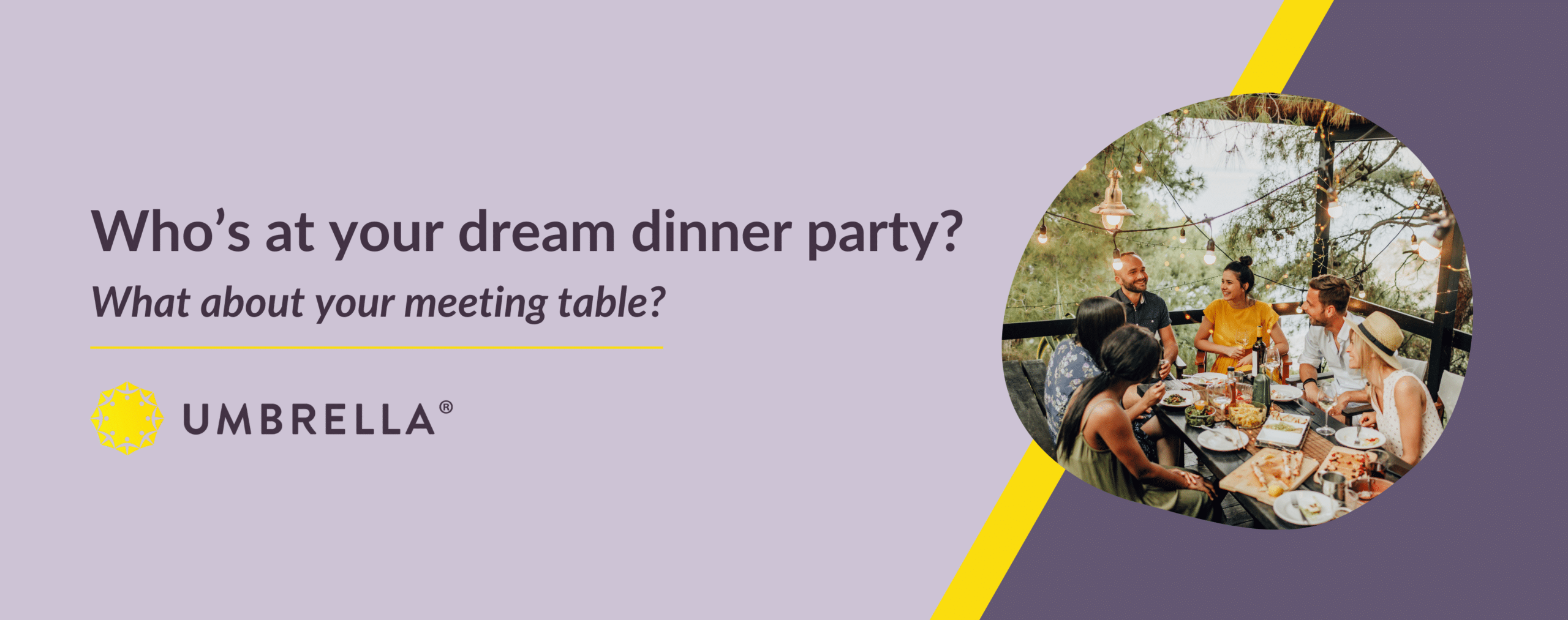Who would you invite to your dream dinner party? It’s a classic icebreaker, deployed to make you think, get to the root of who you admire, and what makes you tick.
Sometimes the answer points to whether someone is a sports fan (Lionel Messi, Michael Jordan, Serena Williams), a music buff (Bruce Springsteen, Dolly Parton, Beyoncé), or someone who cares about new ideas (Barack Obama, Jane Goodall, David Attenborough).
Regardless of “who”, the line-up people choose is almost always diverse. We want people at our dinner party who offer different perspectives to our own, who can tell stories about who they are and where they’ve been. We want people who can share the spotlight, ask good questions, and have been through something we haven’t been through ourselves.
That’s because we know it to be inherently true – when individuals of different ages and genders, from different cultures, and a range of lived experiences congregate, we get engaging and diverse input. Life gets more interesting.
So, what happens when you imagine your dream line-up sitting around a meeting room table? And does that diversity reflect who you are sharing your meeting rooms with now?
There’s a long list of cognitive biases that come into play when we are recruiting for roles, deciding on promotions, and choosing who gets the opportunity to develop. One of those is the similar-to-me effect (also known as the “affinity bias”). We feel familiar and more favourable towards people who are like us (age, gender, ethnicity, background), meaning we unconsciously want to surround ourselves with people who fit our mould.
The problem is, people who are similar to us, tend to think similar things to us. There’s nothing that stifles creativity, innovation, and efficiency quite as well as a room of people who all look, think, and act the same.
Let’s think back to our dream dinner party. A room full of similar people means stories that start to sound the same (“We all studied the same thing at the same university”), opinions that converge (“We all voted the same way in the last election”), and assumptions that go unchallenged (“This is the right way to do things”). Comfortable, yes, but nothing that rivals a dining table with Michael Jordan, Greta Thunberg, and Malala Yousafzai sitting shoulder-to-shoulder.
So, how do we bring more diversity to our dream meeting table line-up?
- Get real about beating bias. Some companies will take a few minutes before any employment decision, or promotion rounds, to remind themselves about their biases and to actively challenge one another when they see bias creeping in. Others will de-identify resumes and cover letters to remove demographic information before sending them to the hiring panel. The research is clear that structured interviews, rather than free-form ones, take away room for bias.
- Test out new ways to bring fresh voices to the table. For example, bring back the “skip-level” meeting – or try it if you haven’t before – a meeting that skips a level of authority within an organisation. This might mean a graduate employee meeting directly with the CEO or other member of the exec with explicit encouragement to bring along fresh ideas and ways of thinking. Most importantly, before making any big decisions, or when hosting influential meetings or events, take a pause to ask, “Have I got the right voices at this table? Have I got diversity of thought in this room?”
- And lastly, ensure that whoever is at the meeting table has the psychological safety to talk openly. Also known as “radical candour”, this is about creating a “speak-up” culture where people feel able to raise ideas, identify problems, and make mistakes without fear of negative consequences. The only thing worse than a dinner party or board room with no diversity, is a diverse dinner party or board room where no-one feels safe enough to interrupt the loudest person in the room
If you want to learn more about psychological safety, bias, or new ways of working – talk to us. We have training options to suit all types of teams, and the know-how to assess and advise on workplace wellbeing. No problem is too prickly – we’re here to help.



